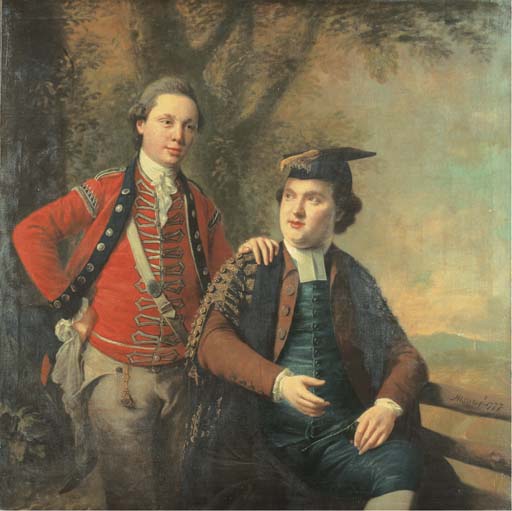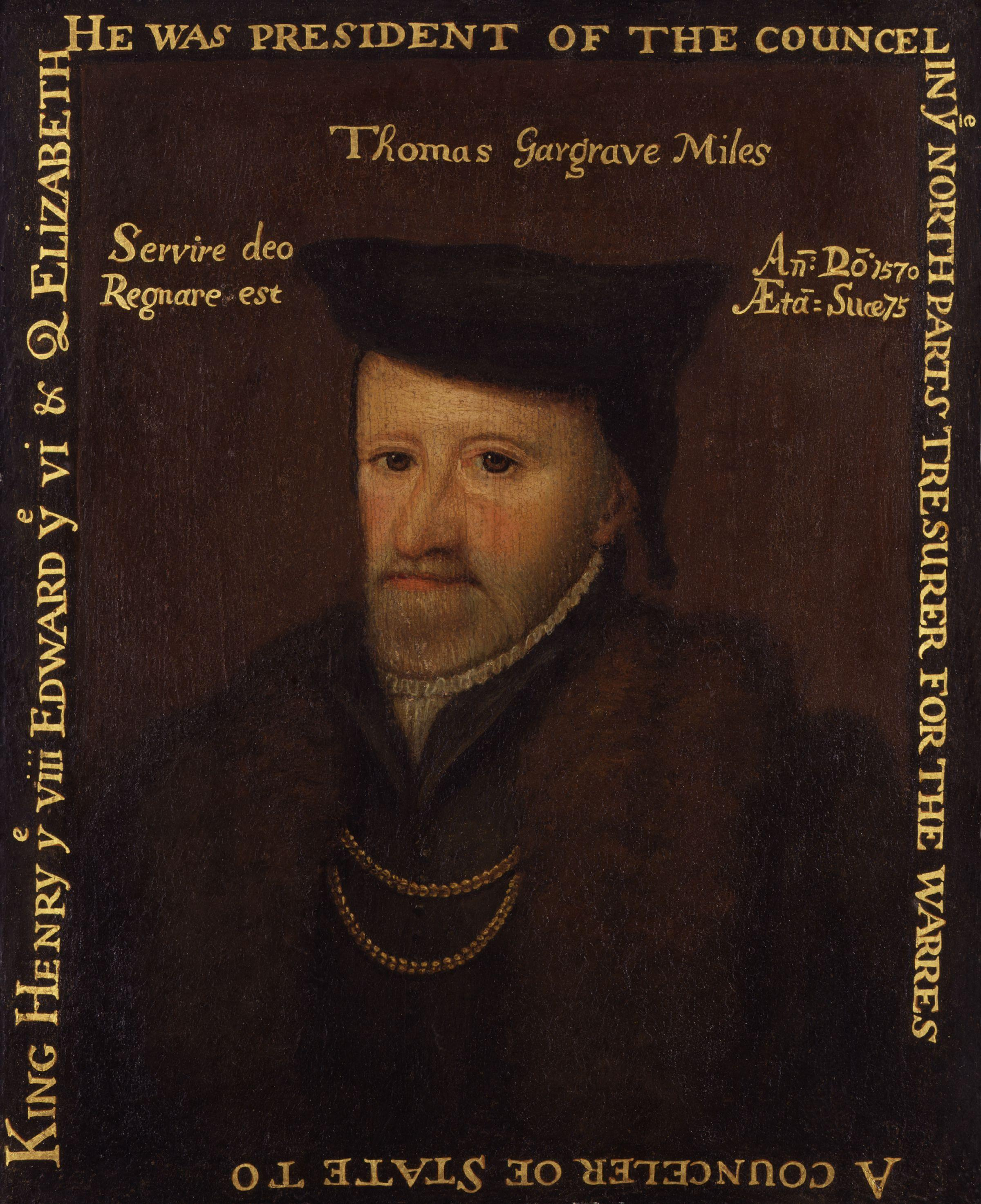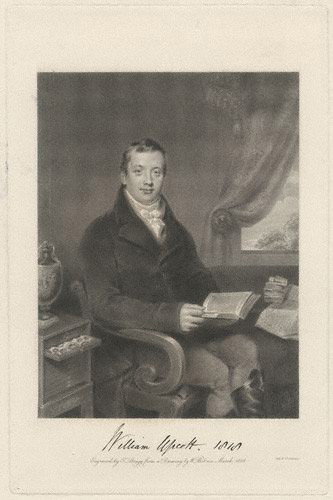|
Thomas Gery Cullum
Sir Thomas Gery Cullum, 7th Baronet (30 November 1741 – 8 September 1831) was a medical doctor educated at London Charterhouse and Trinity College, Cambridge, and who later practised surgery at Bury St. Edmunds, Suffolk, where he served as an alderman and Deputy Lieutenant for Suffolk. Life He was the son of Sir John Cullum, 5th Baronet, of Hardwick House, Hardwick, Suffolk. Sir John Cullum, 6th Baronet (1733–1785), his brother, was known as the "historian of Hawstead". H Thomas Gery Cullum became 7th Baronet in 1785. He was a well-regarded writer on science and on botany and became a Fellow of the Royal Society, of the Society of Antiquaries of London and of the Linnaean Society. He was recommended as a Fellow of the Royal Society in January 1787 along with James Smithson. Cullum also served as Bath King of Arms from 1771 to 1800. He was succeeded as Bath King of Arms by his son John Palmer Cullum, Esq, who served from 1800–1829: the pair served for nearly 60 years. ... [...More Info...] [...Related Items...] OR: [Wikipedia] [Google] [Baidu] |
Sir Thomas Gery Cullum (1741–1831), 6th Baronet
Sir Thomas Gery Cullum, 7th Baronet (30 November 1741 – 8 September 1831) was a medical doctor educated at London Charterhouse and Trinity College, Cambridge, and who later practised surgery at Bury St. Edmunds, Suffolk, where he served as an alderman and Deputy Lieutenant for Suffolk. Life He was the son of Sir John Cullum, 5th Baronet, of Hardwick House, Hardwick, Suffolk. Sir John Cullum, 6th Baronet (1733–1785), his brother, was known as the "historian of Hawstead". H Thomas Gery Cullum became 7th Baronet in 1785. He was a well-regarded writer on science and on botany and became a Fellow of the Royal Society, of the Society of Antiquaries of London and of the Linnaean Society. He was recommended as a Fellow of the Royal Society in January 1787 along with James Smithson. Cullum also served as Bath King of Arms from 1771 to 1800. He was succeeded as Bath King of Arms by his son John Palmer Cullum, Esq, who served from 1800–1829: the pair served for nearly 60 years. ... [...More Info...] [...Related Items...] OR: [Wikipedia] [Google] [Baidu] |
Hardwick House, Suffolk
Hardwick House was a manor house near Bury St Edmunds, Suffolk, owned by Sir Robert Drury, Speaker of the House of Commons, of Hawstead Place. It was subsequently purchased in the seventeenth century by Royalist Robert Cullum, a former Sheriff of London. Experts in Suffolk county history as well as noted authorities in antiquarian and botanical matters, the Cullum family of eight successive baronets authored works on the county and its fauna and flora. Sir Thomas Gery Cullum, a Charterhouse graduate, medical doctor and member of the Royal Academy and the Linnean Society, was a well-regarded author on science and botany. History Lords of the manor of Hardwick, the Cullum family lived at Hardwick House for almost three centuries, from 1656 until the 1920s, producing a line of baronets who were physicians, botanists, antiquarians, authors, horticulturalists, ministers and two of whom served as Bath King of Arms for the Order of the Bath for nearly 60 years. Ultimately, the Cullum f ... [...More Info...] [...Related Items...] OR: [Wikipedia] [Google] [Baidu] |
Cullumia
''Cullumia'' is a genus of flowering plants in the daisy family. ; Species All the species are endemic to the Cape Province region of South Africa South Africa, officially the Republic of South Africa (RSA), is the southernmost country in Africa. It is bounded to the south by of coastline that stretch along the South Atlantic and Indian Oceans; to the north by the neighbouring countri .... References Asteraceae genera Arctotideae Endemic flora of South Africa Taxa named by Robert Brown (botanist, born 1773) {{Cichorioideae-stub ... [...More Info...] [...Related Items...] OR: [Wikipedia] [Google] [Baidu] |
Linnean System
Linnaean taxonomy can mean either of two related concepts: # The particular form of biological classification (taxonomy) set up by Carl Linnaeus, as set forth in his '' Systema Naturae'' (1735) and subsequent works. In the taxonomy of Linnaeus there are three kingdoms, divided into ''classes'', and they, in turn, into lower ranks in a hierarchical order. # A term for rank-based classification of organisms, in general. That is, taxonomy in the traditional sense of the word: rank-based scientific classification. This term is especially used as opposed to cladistic systematics, which groups organisms into clades. It is attributed to Linnaeus, although he neither invented the concept of ranked classification (it goes back to Plato and Aristotle) nor gave it its present form. In fact, it does not have an exact present form, as "Linnaean taxonomy" as such does not really exist: it is a collective (abstracting) term for what actually are several separate fields, which use similar appro ... [...More Info...] [...Related Items...] OR: [Wikipedia] [Google] [Baidu] |
Flora
Flora is all the plant life present in a particular region or time, generally the naturally occurring (indigenous) native plants. Sometimes bacteria and fungi are also referred to as flora, as in the terms '' gut flora'' or '' skin flora''. Etymology The word "flora" comes from the Latin name of Flora, the goddess of plants, flowers, and fertility in Roman mythology. The technical term "flora" is then derived from a metonymy of this goddess at the end of the sixteenth century. It was first used in poetry to denote the natural vegetation of an area, but soon also assumed the meaning of a work cataloguing such vegetation. Moreover, "Flora" was used to refer to the flowers of an artificial garden in the seventeenth century. The distinction between vegetation (the general appearance of a community) and flora (the taxonomic composition of a community) was first made by Jules Thurmann (1849). Prior to this, the two terms were used indiscriminately.Thurmann, J. (1849). ''Essai de ... [...More Info...] [...Related Items...] OR: [Wikipedia] [Google] [Baidu] |
James Edward Smith (botanist)
__NOTOC__ Sir James Edward Smith (2 December 1759 – 17 March 1828) was an English botanist and founder of the Linnean Society. Early life and education Smith was born in Norwich in 1759, the son of a wealthy wool merchant. He displayed a precocious interest in the natural world. During the early 1780s he enrolled in the medical course at the University of Edinburgh where he studied chemistry under Joseph Black and natural history under John Walker. He then moved to London in 1783 to continue his studies. Smith was a friend of Sir Joseph Banks, who was offered the entire collection of books, manuscripts and specimens of the Swedish natural historian and botanist Carl Linnaeus following the death of his son Carolus Linnaeus the Younger. Banks declined the purchase, but Smith bought the collection for the bargain price of £1,000. The collection arrived in London in 1784, and in 1785 Smith was elected Fellow of the Royal Society. Academic career Between 1786 and 1788 Smit ... [...More Info...] [...Related Items...] OR: [Wikipedia] [Google] [Baidu] |
West Suffolk Hospital
West Suffolk Hospital is a small district general hospital in Bury St Edmunds, England. It is managed by the West Suffolk NHS Foundation Trust. History The hospital was built in a former Ordnance Depot in Hospital Road in Bury St Edmunds. It was opened as the Bury and Suffolk General Hospital on 4 January 1825. It was extended in 1861 and balconies were added in 1908. It became the Suffolk General Hospital in 1902 and the West Suffolk General Hospital in 1929. After joining the National Health Service in 1948, it moved to Hardwick Lane in Bury St Edmunds in 1973. The hospital received extensive publicity when Myra Hindley, the Moors murderer, died there in November 2002. The Marquess of Bristol, whose former home was Ickworth House near Bury St Edmunds, opened a new Friends of the Hospital shop in June 2013. Services The hospital provides accident & emergency, maternity, oncology and palliative care services. Investigation into anonymous letters After a member of staff had w ... [...More Info...] [...Related Items...] OR: [Wikipedia] [Google] [Baidu] |
High Sheriff Of Suffolk
This is a list of Sheriffs and High Sheriffs of Suffolk. The Sheriff is the oldest secular office under the Crown and is appointed annually (in March) by the Crown. The Sheriff was originally the principal law enforcement officer in the county and presided at the Assizes and other important county meetings. Most of the responsibilities associated with the post have been transferred elsewhere or are now defunct, so that its functions are now largely ceremonial. There was a single Sheriff serving the two counties of Norfolk and Suffolk until 1576. On 1 April 1974, under the provisions of the Local Government Act 1972, the title of Sheriff of Suffolk was retitled High Sheriff of Suffolk. Sheriff Pre-17th century 17th century 18th century 19th century 20th century High Sheriff 20th century 21st century See also High Sheriff of Norfolk and Suffolk References British History Online-List of Sheriffs for Suffolk {{DEFAULTSORT:High Sheriff Of Suffolk Suffolk ... [...More Info...] [...Related Items...] OR: [Wikipedia] [Google] [Baidu] |
National Portrait Gallery (London)
The National Portrait Gallery (NPG) is an art gallery in London housing a collection of portraits of historically important and famous British people. It was arguably the first national public gallery dedicated to portraits in the world when it opened in 1856. The gallery moved in 1896 to its current site at St Martin's Place, off Trafalgar Square, and adjoining the National Gallery (London), National Gallery. It has been expanded twice since then. The National Portrait Gallery also has regional outposts at Beningbrough Hall in Yorkshire and Montacute House in Somerset. It is unconnected to the Scottish National Portrait Gallery in Edinburgh, with which its remit overlaps. The gallery is a non-departmental public body sponsored by the Department for Digital, Culture, Media and Sport. Collection The gallery houses portraits of historically important and famous British people, selected on the basis of the significance of the sitter, not that of the artist. The collection includes ... [...More Info...] [...Related Items...] OR: [Wikipedia] [Google] [Baidu] |
Speaker Of The House Of Commons (United Kingdom)
The speaker of the House of Commons is the presiding officer of the House of Commons, the lower house and primary chamber of the Parliament of the United Kingdom. The current speaker, Sir Lindsay Hoyle, was elected Speaker on 4 November 2019, following the retirement of John Bercow. Hoyle began his first full parliamentary term in the role on 17 December 2019, having been unanimously re-elected after the 2019 general election. The speaker presides over the House's debates, determining which members may speak and which amendments are selected for consideration. The speaker is also responsible for maintaining order during debate, and may punish members who break the rules of the House. Speakers remain strictly non-partisan and renounce all affiliation with their former political parties when taking office and afterwards. The speaker does not take part in debate or vote (except to break ties; and even then, the convention is that the speaker casts the tie-breaking vote accord ... [...More Info...] [...Related Items...] OR: [Wikipedia] [Google] [Baidu] |
Thomas Gargrave
Sir Thomas Gargrave (1495–1579) was an English Knight who served as High Sheriff of Yorkshire in 1565 and 1569. His principal residence was at Nostell Priory, one of many grants of land that Gargrave secured during his lifetime. He was Speaker of the House of Commons and vice president of the Council of the North. Early life Gargrave was the son of Thomas Gargrave of Wakefield, West Yorkshire, and Elizabeth, daughter of William Levett of Hooton Levitt and Normanton, West Yorkshire. Through his mother's Levett family, Gargrave was related to such Yorkshire clans as the Wickersleys and their descendants, the Swyfts (Swifts), the Reresbys, the Barnbys, the Wentworths, the Bosviles, the Mirfins and others. He received a legal education at either Gray's Inn or the Middle Temple, and by 1521 began his career as Steward of the Household of Thomas Darcy, 1st Baron Darcy de Darcy (often called Lord Darcy of the North), where Gargrave's ambition and drive were immediately apparent. ... [...More Info...] [...Related Items...] OR: [Wikipedia] [Google] [Baidu] |
William Upcott
William Upcott (1779–1845) was an English librarian and antiquary. Life Born in Oxfordshire, he was the illegitimate son of Ozias Humphry by Delly Wickens, daughter of an Oxford shopkeeper, called Upcott from the maiden name of Humphry's mother. His father bequeathed to him his miniatures, pictures, drawings, and engravings, as well as correspondence with many leading figures. Upcott was initially a bookseller, at first an assistant of Robert Harding Evans of Pall Mall, and then of John Wright of Piccadilly. While at Wright's shop he attracted the attention of John Ireland, William Gifford, and the writers of the '' Anti-Jacobin'' who met there, and he witnessed the scuffle there between Gifford and John Wolcot, helping to eject Wolcot. When Richard Porson was made librarian of the London Institution, Upcott was appointed as his assistant (23 April 1806), and he continued in the same position under William Maltby. On 30 May 1834 he resigned his office. Upcott spent the rest ... [...More Info...] [...Related Items...] OR: [Wikipedia] [Google] [Baidu] |









